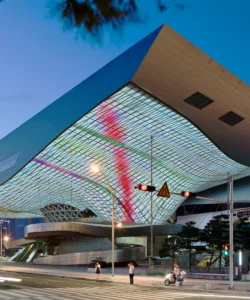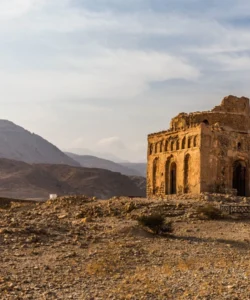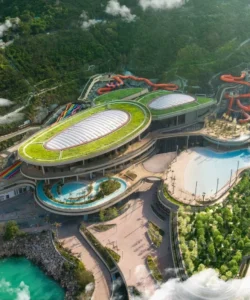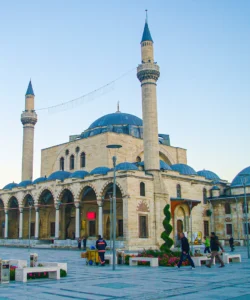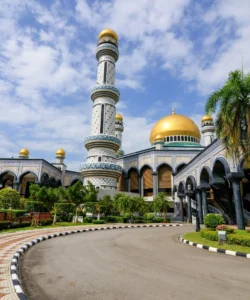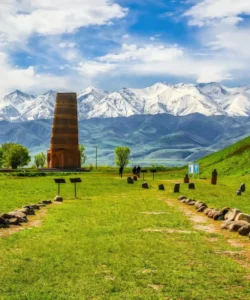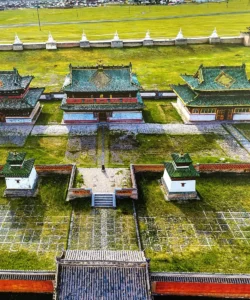Himeji Castle (姫路城, Himeji-jō) is a magnificent hilltop Japanese castle complex located in the city of Himeji, Hyōgo Prefecture. Widely considered to be Japan’s most spectacular and best-preserved feudal castle, it is a masterpiece of prototypical Japanese castle architecture. Its brilliant white exterior and elegant, soaring form have earned it the beloved nickname Shirasagi-jō, or “White Heron Castle.” Dating back to the 14th century, with its current form completed in the early 17th century, the castle is a designated National Treasure and was one of the first sites in Japan to be named a UNESCO World Heritage Site in 1993.
![]()
Name and Address
- Name: Himeji Castle (also known as White Heron Castle or Shirasagi-jō).
- Address: 68 Honmachi, Himeji, Hyōgo 670-0012, Japan.
How to Get There
Himeji is a major stop on the Shinkansen (bullet train) line, making the castle highly accessible from major cities like Osaka, Kyoto, and Hiroshima.
- By Train (Recommended):
- From cities like Osaka or Kyoto, take the JR Sanyo Shinkansen or a JR Special Rapid Train to Himeji Station. The journey is quick, taking about 30-40 minutes from Osaka and 45-60 minutes from Kyoto.
- From Himeji Station: The castle is prominently visible from the station’s north exit. It is a pleasant, straightforward 15-20 minute walk down the broad Otemae-dori Street. Alternatively, a 5-minute bus or taxi ride is available.
- Visitor Tip: The castle can get very crowded, especially during cherry blossom season (early April) and Golden Week. To avoid long waits, it is best to visit on a weekday and arrive early in the morning.
Landscape and Architecture
Himeji Castle is a brilliant showcase of both aesthetic beauty and sophisticated military design, set within a vast, strategically planned landscape.
- Architectural Style and Appearance: The castle is famous for its elegant, white appearance. The walls are covered in a fire-resistant white plaster, which not only served a defensive purpose but also created its striking look, resembling a white heron taking flight. The complex consists of 83 buildings, including turrets, gates, and corridors, all interconnected in a masterful design.
- The Main Keep (Tenshu): The heart of the complex is the six-story main keep, a towering wooden structure that is one of only twelve original castle keeps remaining in Japan. It is connected to three smaller subsidiary keeps, forming a complex and visually stunning central structure. Inside, visitors can climb a series of steep, narrow wooden staircases to the top floor, which offers panoramic views of the city of Himeji.
- Advanced Defensive Systems: The castle is a military masterpiece. Its layout is a confusing, labyrinth-like maze of winding paths, gates, and baileys designed to slow down and trap invading forces. The walls are filled with loopholes (sama) of various shapes for archers and gunmen, as well as “stone drop windows” (ishi-otoshi-mado) for defending against attackers below.
- Koko-en Garden: Located next to the castle, Koko-en is a beautiful Japanese garden created in 1992. It consists of nine separate, walled gardens designed in various styles of the Edo period, offering a peaceful retreat with stunning views of the castle.
What Makes It Famous
Himeji Castle’s fame is built on its unparalleled beauty, its remarkable state of preservation, and its ingenious defensive design.
- “The White Heron Castle”: Its elegant, brilliant white appearance is its most famous feature and the source of its poetic nickname.
- Japan’s Best-Preserved Castle: Himeji Castle is unique because it has never been destroyed by war, earthquake, or fire. It survives in its complete, original 17th-century form, offering the most authentic glimpse into the pinnacle of Japanese castle design.
- A UNESCO World Heritage Site: It was one of the very first sites in Japan to be inscribed on the UNESCO World Heritage list, recognized as a masterpiece of construction in wood that combines functional defense with high aesthetic appeal.
- Masterpiece of Defensive Architecture: It is regarded as the finest surviving example of Japanese feudal castle design, showcasing a highly developed and complex system of defense that was virtually impregnable.
Differences from Other Wonders
Himeji Castle stands apart from other famous Japanese castles and global landmarks.
- Original vs. Reconstructed: Many of Japan’s other famous castles, such as Osaka Castle or Nagoya Castle, are modern concrete reconstructions, their original keeps having been destroyed in wars or fires. Himeji Castle’s main keep is the authentic, original wooden structure, offering a completely different and more historically significant experience.
- Complexity and Scale: While other original castles like Matsumoto Castle are beautiful, Himeji is far larger and more complex, with its sprawling network of 83 buildings and intricate defensive layout.
- White vs. Black: Himeji’s brilliant white appearance provides a striking contrast to other famous castles like Matsumoto Castle, which is known as the “Crow Castle” for its imposing black exterior.
- Aesthetic Elegance and Military Might: Himeji Castle is the perfect synthesis of form and function. While many fortresses around the world are purely functional and grim, Himeji achieves the highest level of military defensibility while also being a work of breathtaking elegance and beauty.

